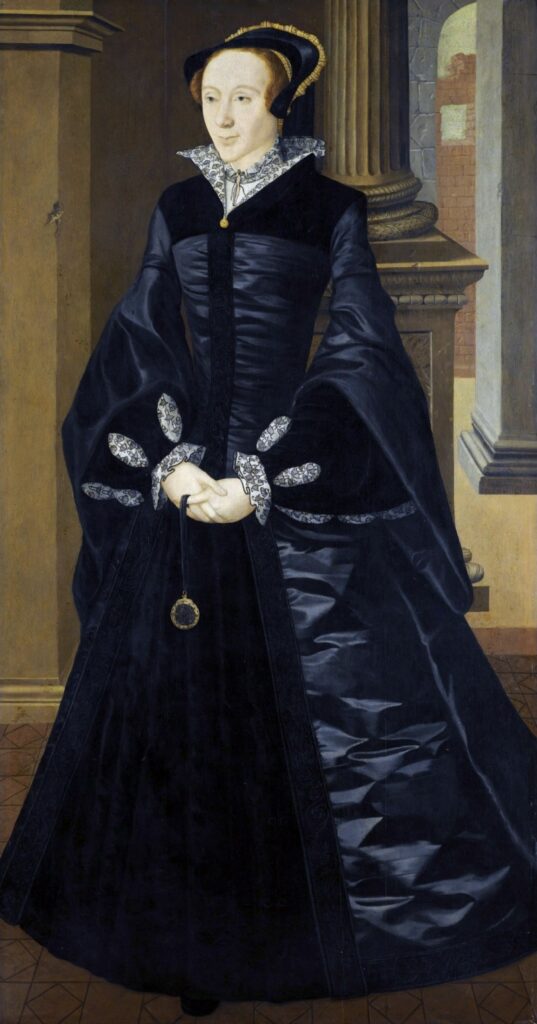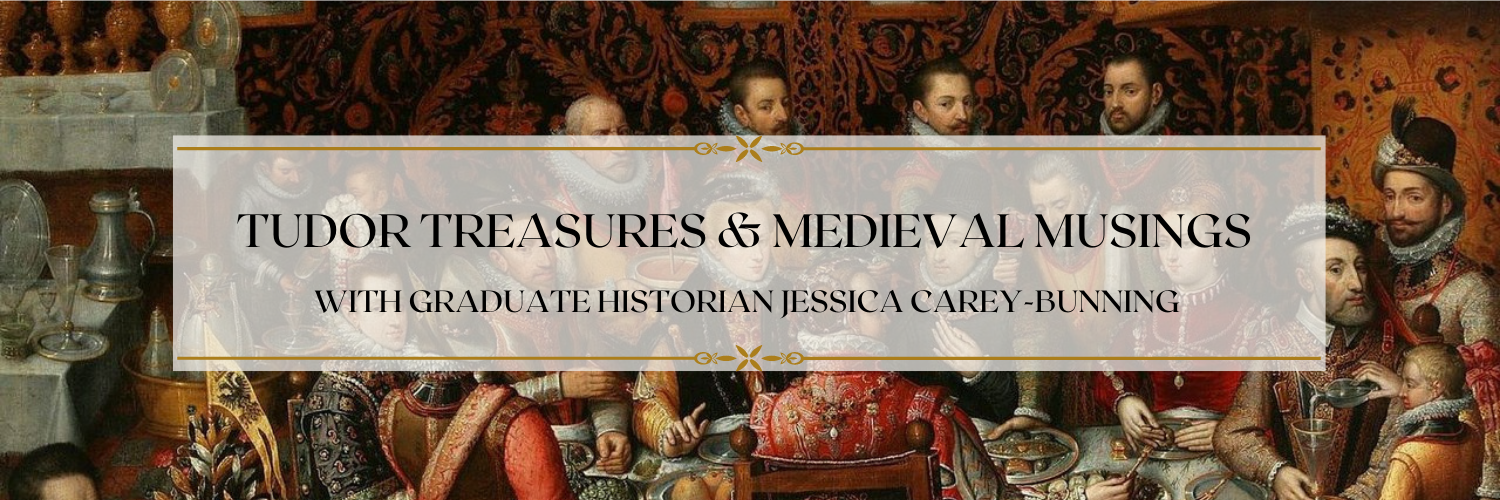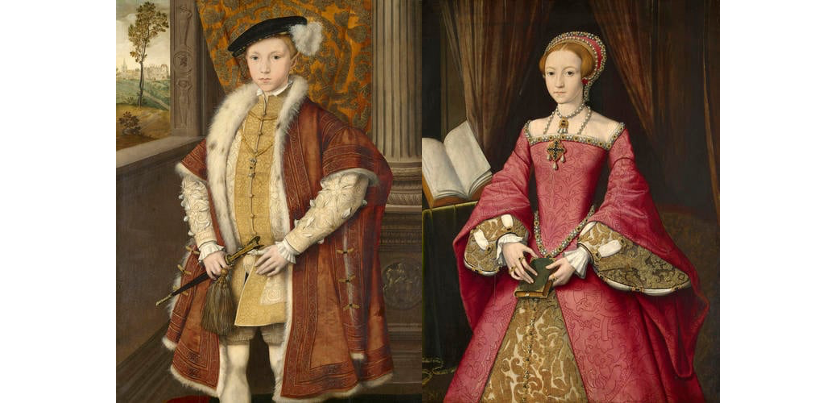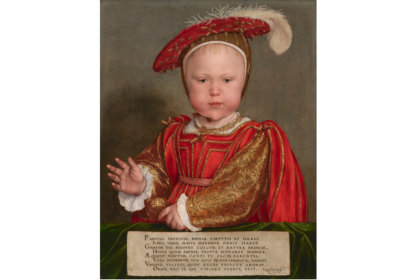In 1546, two very famous Tudor portraits were created: the portrait of a young Lady Elizabeth, and the other of young Edward, Prince of Wales. It believed they were done by the King’s Painter, who at this time was Guillim Scrots, a Netherlandish artist who filled the role after the death of Hans Holbein the Younger in 1543.
There have been some questions raised as to whether Scrots was the artist behind the portraits, but the technical details reveal that the two portraits were certainly done by the same artist. The proportions of each sitter are very similar, and are placed similarly within their setting. The lighting, colouring and setting within a room are also similar. The style of the faces and background textures are definitely by the same artist. Furthermore, a dendrochronological analysis of the two portraits suggests they were painted on timbers from the same tree. The joins between the boards for each portrait have been reinforced in the same way, with narrow strips of canvas under the gesso. They are also of very similar dimensions, and the artist has clearly used the same methods for each portrait.
The two portraits were even more similar to begin with. It seems that the portrait of Elizabeth originally included architectural features, rather than the curtain which can now be seen. We cannot know precisely at what stage this change was made, though it may have been done during the original painting process, nor the reason.
There is something missing though; why is there no accompanying portrait of Mary?
It seems odd that Henry VIII would order portraits of two of his children but not the third. Whilst there are a variety of explanations that could apply, such as the portraits were made for marriage negotiations that were ongoing for Edward and Elizabeth, or that Mary had her portrait taken just a few years earlier in 1544 by Master John, I believe there could be a missing portrait of Mary by Scrots out there, waiting to be discovered.

At one point it seemed like we did have a portrait by Scrots from 1546 which fit the bill; unfortunately it is now believed to actually show the King’s niece, Margaret Douglas. The portrait is the third in the series attached to this post. Whilst the full length of the portrait, which was reserved for the very high born, does fit with an identification of Mary, and the background is similar enough to the Edward and Elizabeth portraits to suggest a common theme, the details of the woman don’t fit what is known of Mary. The shape and gauntness of the face don’t match other portraits of Mary, particularly the 1544 portrait. Mary was known for the opulence of her dress; she favoured rich fabrics and bedazzling jewellery, quite unlike the austerity of the dress in this portrait. That isn’t to say that the portrait wasn’t commissioned at the same time, and possibly even for the same purpose; as mentioned, many of the features are similar, and it would be very interesting to see a dendrochronological analysis of the wood panels in comparison to the Edward and Elizabeth portraits.

There are many portraits that remain unidentified, and even more that are sitting in private collections, away from the curious eyes of the public and historians. This hypothetical portrait may be out there somewhere. To identify a painting as potentially part of this ‘set’ of portraits, there are several features we would look for:
– First of all, we would obviously be looking for a portrait which resembles the other known portraits and descriptions of Mary from this time, particularly the Master John portrait of 1544;
– We would be looking for a portrait which could be date to around 1546, give or take a year;
– We would be looking for a portrait with a background setting, rather than a plain colour backdrop, potentially with architectural features;
– And we would be looking for a portrait that could be attributed to the artist, William Scrots, with his high level of sophistication and detail.
If anyone knows of, or comes across a portrait that seems fulfil some or all of these criteria, please let me know. We don’t know if such a portrait of Mary ever existed, but I have hope that it did, and that one day it will be reunited and displayed with the portraits of Edward and Elizabeth.
Top images: Portrait of Prince Edward, attributed to Guilim Scrots, c.1546 (left);
portrait of Lady Elizabeth, attributed to Guilim Scrots, c.1546 (right).





